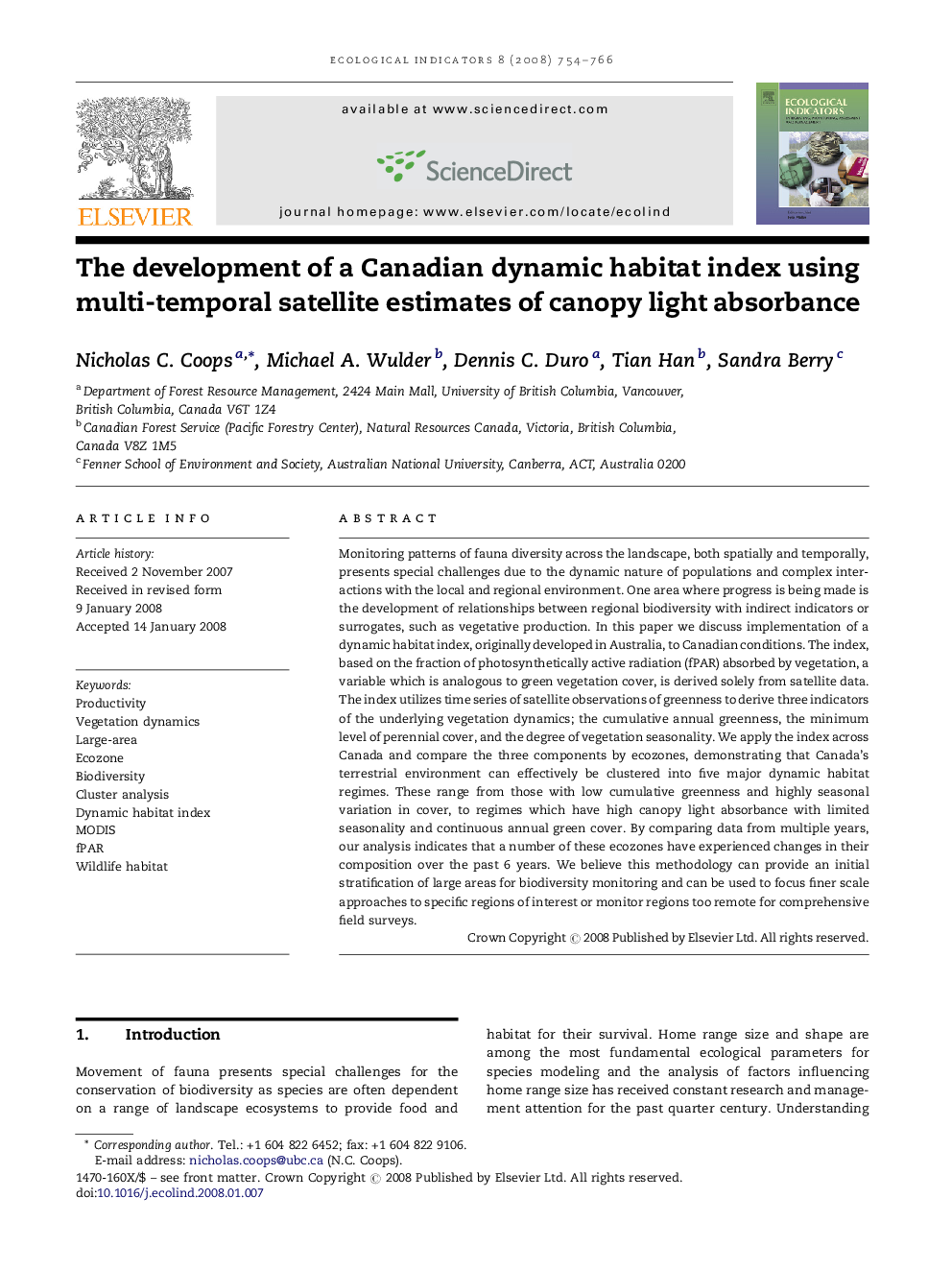| Article ID | Journal | Published Year | Pages | File Type |
|---|---|---|---|---|
| 4374418 | Ecological Indicators | 2008 | 13 Pages |
Monitoring patterns of fauna diversity across the landscape, both spatially and temporally, presents special challenges due to the dynamic nature of populations and complex interactions with the local and regional environment. One area where progress is being made is the development of relationships between regional biodiversity with indirect indicators or surrogates, such as vegetative production. In this paper we discuss implementation of a dynamic habitat index, originally developed in Australia, to Canadian conditions. The index, based on the fraction of photosynthetically active radiation (fPAR) absorbed by vegetation, a variable which is analogous to green vegetation cover, is derived solely from satellite data. The index utilizes time series of satellite observations of greenness to derive three indicators of the underlying vegetation dynamics; the cumulative annual greenness, the minimum level of perennial cover, and the degree of vegetation seasonality. We apply the index across Canada and compare the three components by ecozones, demonstrating that Canada's terrestrial environment can effectively be clustered into five major dynamic habitat regimes. These range from those with low cumulative greenness and highly seasonal variation in cover, to regimes which have high canopy light absorbance with limited seasonality and continuous annual green cover. By comparing data from multiple years, our analysis indicates that a number of these ecozones have experienced changes in their composition over the past 6 years. We believe this methodology can provide an initial stratification of large areas for biodiversity monitoring and can be used to focus finer scale approaches to specific regions of interest or monitor regions too remote for comprehensive field surveys.
